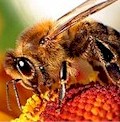Welcome in! Beekeeping suits are full length jumpsuits that are worn by the beekeeper when they are tending to the bee hive. The protective suit that beekeepers wear is usually light in color, usually white, and made out of a smooth material. A bee suit that is light in color provides the largest difference from a bee colony's natural predators like bears and skunks which tend to be dark-colored and furry. The beekeeping suit also gives the beekeeper a way to remove stings and venom sacs basically with a tug on the clothing.
First is to get a knowledge of the bee's first line of defense. Even with an understanding of bee behavior, most beekeepers still wear some protective clothing. It is not uncommon for people to be allergic to bee stings. The easily way to know if you are allergic is to get stung but that is of cause not recommended. In case you are thinking about keeping bees, you ought to first know whether or not you are allergic to bee stings.
Even experienced beekeepers get stung. In fact, some beekeepers think that the more stings a beekeeper receives, the less irritation each one will cause to the body in the future. It is impossible not to get stung at all while the bees get to know you. With frequent bee stings the beekeepers create higher levels of antibodies due to the reaction of the bee venom which offers them a resistant to stings in the future.
However, to minimize the number of times that they are stung, even experienced beekeepers usually wears gloves and a hooded suit or hat and veil. Sometimes seasoned beekeepers might choose not to wear gloves as they prevent nimble work with hands. Scraping the bee sting on a bare hand will reduce the amount of venom that is injected. A person's face and neck are the most important areas to protect because defensive bees are obsessed in the person's warm and moist breath. You will encounter much more pain and swelling on the face than a sting received elsewhere on the body. And, it is difficult for the beekeeper to remove the bee sting from their face without taking a look at a mirror.
It is important to learn how to approach the bees calmly in order to avoid provoking them into an aggressive assault especially from an immense group of bees that are targeting the face.
Protective clothing may also delay or reduce the venom from the bee-stings from entering in to the body. Stings caught in the suit will continue to give out alarm pheromone which incites the bees into attacks. In order to reduce the risk of the bees picking up the sent the next time that the beekeeper visits the hive, the suit ought to be washed regularly. They can also rinse their hands in vinegar to minimize the bee's attraction.
Proceed with caution!
